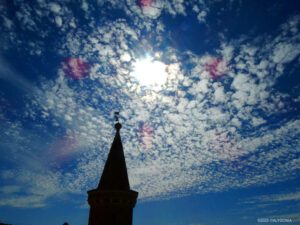The best travel experiences in Italy
Urbino During the Renaissance: A Journey Through Art, Culture, and Power
Urbino, a small yet historically significant city in central Italy, holds an esteemed place in the annals of the Renaissance. This period, spanning roughly from the 14th to the 17th century, witnessed a profound transformation in European art, culture, and intellectual pursuits. While cities like Florence and Rome often dominate discussions of the Renaissance, Urbino was a vital center of this artistic and cultural revolution.
In this article, we will take a deep dive into Urbino during the Renaissance, exploring its political, artistic, and cultural significance, and how this small city became a beacon of Renaissance thought. We will also discuss the key figures and landmarks that made Urbino a thriving hub of the Italian Renaissance.
1. Introduction to Urbino in the Renaissance
1.1 The Renaissance: A Brief Overview
The Renaissance was a period of intellectual and cultural rebirth that began in the 14th century in Italy and spread throughout Europe. It marked the end of the Middle Ages and the beginning of the modern era, characterized by advancements in art, science, philosophy, and literature. The Renaissance placed a renewed emphasis on the classics of ancient Greek and Roman culture, as well as the development of new ideas in art and architecture.
1.2 Urbino: A Small Town with a Big Impact
Urbino was a relatively small town during the Renaissance, yet it played a crucial role in shaping the intellectual and artistic landscape of the era. It was the seat of the Montefeltro family, a powerful dynasty that ruled over Urbino and surrounding territories. The Montefeltro family became well-known patrons of the arts and intellectual pursuits, inviting some of the finest artists, philosophers, and architects to the city.
2. The Montefeltro Family and Their Role in Urbino’s Renaissance
2.1 The Rise of the Montefeltro Family
The Montefeltro family rose to prominence in the 14th and 15th centuries, thanks in part to their military prowess and political acumen. Federico da Montefeltro, one of the most notable members of the family, became the Duke of Urbino in 1444. His reign was marked by a commitment to the arts, education, and diplomacy, which helped transform Urbino into a cultural center of the Renaissance.
2.2 Federico da Montefeltro: A Patron of the Arts
Federico da Montefeltro was not only a skilled military leader but also a keen patron of the Renaissance arts. His court became a gathering place for some of the most influential artists, thinkers, and humanists of the period. Federico’s support of the arts was instrumental in establishing Urbino as a cultural hub.
Federico commissioned numerous works of art, including the famous “The Duke of Urbino” portrait by Piero della Francesca, which is now housed in the Uffizi Gallery in Florence. He also invited renowned artists, architects, and scholars to his court, transforming Urbino into an intellectual and artistic center.
2.3 The Montefeltro Court: A Hub of Intellectual and Artistic Activity
Under the rule of Federico and his successors, the Montefeltro court became a beacon of humanism, philosophy, and art. The court attracted prominent figures such as the philosopher Giovanni da S. Andrea and the artist Piero della Francesca, whose works continue to influence art and architecture today.
The court was also home to a renowned library, which housed a vast collection of manuscripts and books, making it an important center of learning and scholarship during the Renaissance. The intellectual atmosphere of the Montefeltro court made Urbino a place where ideas could flourish.
3. Key Renaissance Landmarks in Urbino
3.1 The Palazzo Ducale (Ducal Palace)
One of the most iconic landmarks of Renaissance Urbino is the Palazzo Ducale, the residence of the Montefeltro family. The palace was designed by the architect Francesco di Giorgio Martini, and it is considered one of the most important examples of Renaissance architecture.
The palace’s elegant façade, its serene courtyards, and the Galleria Nazionale delle Marche (National Gallery of the Marche) make it a must-visit for anyone interested in Renaissance art and architecture. The gallery houses a wealth of Renaissance masterpieces, including works by Raphael, Piero della Francesca, and Giovanni Santi (Raphael’s father).
3.2 The Birthplace of Raphael
Another important Renaissance landmark in Urbino is the Casa Natale di Raffaello, the birthplace of the famous painter Raphael. Raphael was born in Urbino in 1483, and his early life in the city played a pivotal role in shaping his artistic vision.
While the house is now a museum, it offers a fascinating glimpse into Raphael’s early years and provides context for understanding his later achievements. The museum houses early works by Raphael and a variety of artifacts that shed light on his upbringing in a city rich in artistic traditions.
3.3 The Urbino Cathedral
The Cattedrale di Urbino (Urbino Cathedral) is another important historical and religious site in the city. Though the cathedral has undergone multiple renovations over the centuries, its significance during the Renaissance cannot be overstated. The cathedral houses several works of art from the period, including paintings and sculptures that reflect the city’s commitment to Renaissance ideals.
4. Renaissance Art and Culture in Urbino
4.1 Piero della Francesca: The Artist of Urbino
One of the most famous artists associated with Renaissance Urbino is Piero della Francesca. Known for his mastery of perspective and his use of light and shadow, Piero was a central figure in the early Renaissance. His work, such as the “Duke and Duchess of Urbino” portrait, showcases the Montefeltro family in a serene and dignified manner.
Piero della Francesca’s influence on the development of Renaissance art cannot be overstated, and his work continues to be studied by art historians today.
4.2 Raphael’s Influence on Urbino’s Art Scene
Raphael, born in Urbino, is one of the most renowned artists in the history of Western art. His time in Urbino was formative, and the city’s artistic environment had a lasting impact on his style. Raphael’s work evolved over time, moving from the early influences of Perugino and Leonardo da Vinci to his iconic Vatican frescoes.
While Raphael’s time in Urbino was relatively short, the city played a crucial role in shaping his artistic identity. Many of his early works, such as the “Mond Crucifixion” and “Saint Michael and the Dragon”, reflect the artistic milieu of Renaissance Urbino.
4.3 The Legacy of Humanism in Urbino
Humanism, the intellectual movement that emphasized the study of classical texts and the value of human experience, was central to the Renaissance. Urbino was a vital center of humanist thought, with the court of Federico da Montefeltro actively supporting scholars and philosophers who sought to revive ancient Greek and Roman ideas.
Figures such as Guido da Montefeltro (a philosopher and scholar) were prominent in the city, contributing to the intellectual climate that would later inspire the works of Machiavelli, Boccaccio, and Petrarch.
5. Urbino’s Influence on Renaissance Architecture
5.1 The Role of Francesco di Giorgio Martini
The architect Francesco di Giorgio Martini played a key role in shaping the architectural landscape of Renaissance Urbino. He designed several important buildings in the city, most notably the Palazzo Ducale, which became a model of Renaissance palace architecture.
Martini’s work blended the classical elements of ancient Roman architecture with new Renaissance innovations, creating a harmonious and aesthetically pleasing design. His influence is evident not only in Urbino but also in other Renaissance cities, such as Florence and Siena.
5.2 The Palazzo Ducale’s Architectural Significance
The Palazzo Ducale in Urbino remains one of the most significant examples of Renaissance palace architecture. The building’s layout, its use of perspective, and its incorporation of classical architectural elements reflect the ideals of the Renaissance, including harmony, proportion, and symmetry.
The palace’s Galleria (Gallery) is another example of Renaissance architectural beauty, with its barrel-vaulted ceilings and spacious rooms, providing a fitting backdrop for the collection of Renaissance art that now resides within.
6. Urbino Today: A Renaissance Legacy
6.1 Preserving the Renaissance Spirit
Today, Urbino remains a city that honors its Renaissance past. The city has carefully preserved its historic buildings and cultural treasures, making it a vibrant destination for those interested in exploring Italy’s rich artistic heritage.
The city is home to the University of Urbino, which has played a key role in maintaining the city’s intellectual traditions. The university continues to attract students and scholars from around the world, further cementing Urbino’s place as a center of education and culture.
6.2 Visiting Urbino
Urbino is a UNESCO World Heritage site and remains a key destination for anyone interested in exploring the Renaissance period. Whether you are an art lover, a history enthusiast, or simply someone who appreciates beautiful architecture, Urbino offers a wealth of experiences that transport visitors back to the golden age of the Renaissance.
Visitors can explore the city’s Renaissance landmarks, visit the Palazzo Ducale, walk in the footsteps of Raphael, and
enjoy the stunning views of the Marche countryside.
Book your Urbino private tour
You might also be interested in:
Where is Urbino, Italy? A Complete Guide to the Location, History, and Travel Tips
Private Transfer Service NCC Rental Taxi: The Complete Guide to Traveling with Comfort and Style
Private Guide Urbino: Your Ultimate Guide to Exploring the City
Things to Do in Urbino: A Complete Guide to Italy’s Hidden Gem
Urbino, Italy: All You Must Know Before You Go
Servizio Privato Transfer/Noleggio NCC Taxi: La Guida Completa per Viaggiare con Comfort e Stile
Guida Turistica Urbino: Scopri la Perla del Rinascimento Italiano
Cose da Fare a Urbino: Guida Completa per Scoprire la Città Rinascimentale
Le Migliori 10 Cose da Vedere a Urbino: Una Guida Completa alla Scoperta della Città
Quanto Tempo Ci Vuole per Visitare Urbino? Guida Completa alla Scoperta della Città
https://en.wikipedia.org/wiki/Urbino
https://whc.unesco.org/en/list/828/
https://edition.cnn.com/travel/article/urbino-renaissance-town-italy/index.html



